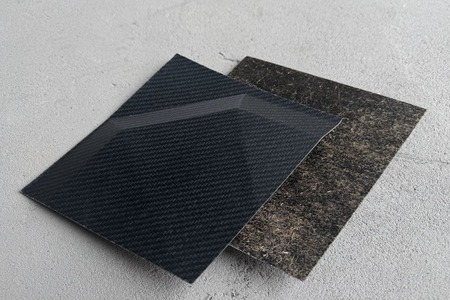
Pakistan, China second phase of FTA outcome not satisfactory
YarnsandFibers News Bureau 2015-12-04 14:00:00 – KarachiThe second phase of China-Pakistan Free Trade Agreement (CPFTA) negotiation round was recently held in Beijing between Pakistan and China but the outcome was not satisfactory to Pakistan especially with reference to protecting its own industry.
Pakistan and China have reportedly failed to finalize the second phase of Free Trade Agreement (FTA) due to differences on exclusion of a specific percentage of products from the list of items which will enjoy concessions; this was revealed by well informed sources.
Both countries have negotiated the second phase of CPFTA wherein Pakistan shared concerns regarding insufficient utilization of concessions given by China to Pakistan and competition faced by local industries due to cheap imports from China. Pakistan is asking China for exclusion of 20 percent of total products from the concessions because of concerns of Pakistan's local industry. But China has shown willingness only on 10 percent exclusion of total products in the second phase under the WTO rules.
China is reluctant to give concessions sought by Pakistan in the second phase. Pakistan is delaying the process with the hope that China will entertain its request, the sources maintained. The CPFTA on trade in goods was signed on 24th November, 2006 and implemented from 1st July, 2007. FTA on Trade in Services was signed on 21st February 2009 and is operational from 10th October, 2009.
The upsurge of Chinese imports has created some problems for the Pakistani local industry making it difficult to compete with Chinese products. Local industries are continuously approaching Ministry of Commerce with complaints of under-invoicing and mis-declaration with regard to imports from China.
Some of the sectors that has approached the Commerce Ministry as they are struggling for their survival includes synthetic textiles, dyes and ceramics plastic articles, leather articles etc,
Pakistan-China volume of trade that was in the region of $4 billion in the year 2006-07, reached an all-time high at $10.19 billion in 2013-14. Pakistan's exports have jumped to $2.4 billion in 2013-14 from $575 million in 2006-07. Correspondingly China's exports to Pakistan have increased to $7.77 billion in 2013-14 from $3.5 billion in 2006-07.
Pakistan's major exports to China are cotton yarn / fabric, rice, raw hides & skins, crude vegetable material, chemical material, etc. While major imports from China are machinery (all sorts) and its parts, yarn and thread of synthetic fiber, vegetable and synthetic textile fiber etc.
Pakistan secured market access on products of immediate export interest like cotton fabrics, blended fabrics, synthetic yarn and fabrics, knit fabrics, home textiles, etc. During first 3 years of implementation of Phase-I, both sides reduced tariffs on almost 36% tariff lines to zero duty.
The Phase II was supposed to start from the sixth year of the entry into force of the agreement and by the end of 2nd phase both sides would have to reduce tariffs on 90% tariff lines to zero percent duty. The FTA covers more than 7000 tariff lines at HS Code 8 digit level.
It has been revealed that Pakistan could not utilize the concessions granted by China as per the review of the first Phase of CPFTA. Pakistan could only export in 253 tariff lines, where average export value was $500 or more, which is around 3.3% of the total tariff lines (7550) on which China granted concessions to Pakistan. Pakistan mainly exported raw materials and intermediate products such as cotton yarn, woven fabric, Grey fabric, etc Value-added products were missing. Some of the value-added products like garments, etc, are included in the concessionary regime.
Pakistan has signed FTAs with Malaysia, Sri Lanka & SAFTA. Most importantly the concessions granted partner countries in these FTAs don't undermine the MOP for Chinese exports to Pakistan. Chinese goods with the CPFTA enjoy a kind of monopolistic position in Pakistani market.
On the other hand, China has FTAs with Chile, New Zealand, Singapore, Peru, Costa Rica and ASEAN countries. With Chile 75 percent of the tariff lines are at zero duty. With New Zealand above 90 per cent tariff lines are at zero percent duty. With Singapore, 166 percent tariff lines, Peru 72 percent tariff lines and with Costa Rica at present 65 per cent of tariff lines are at zero and 64 percent tariff lines would be at zero by 2016, with Malaysia, 94 per cent of tariff lines.
As regards ASEAN countries, with Brunei 67 percent tariff lines are at zero duty, Indonesia 93 percent tariff lines are at zero per cent, Thailand 93 percent tariff lines, Myanmar 93per cent tariff lines, Philippines 63 percent of tariff lines are at zero per cent. While for Pakistan only around 36 percent tariff lines are at zero.
Ever since China has entered into FTA with other countries where it has exchanged concessions, which have undermined the Margin of Preference (MOP) for Pakistani products; more over the coverage and the depth of China's other FTAs is greater than CPFTA.
Market Intelligence
Ask for free sample Report

experience
Customer Base
dedicated team
Countries Served Worldwide









